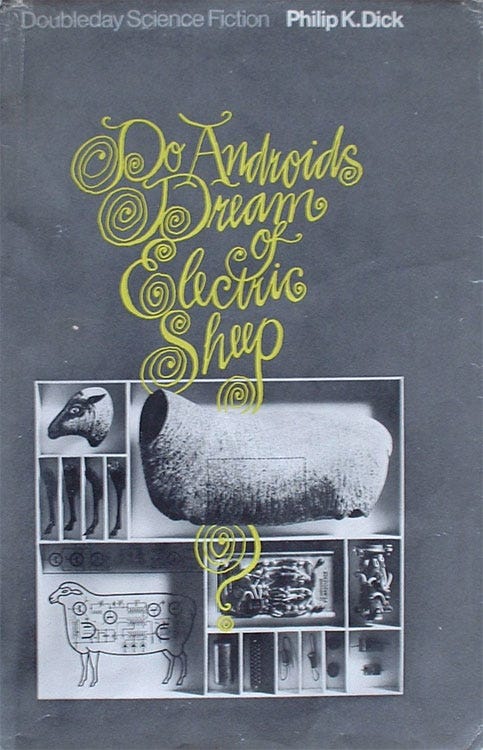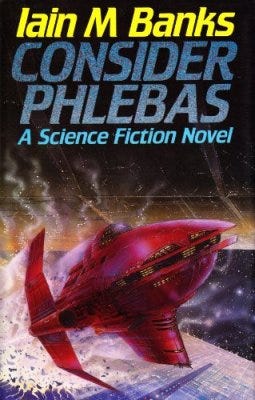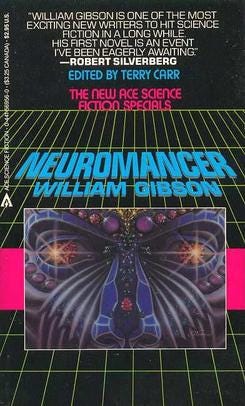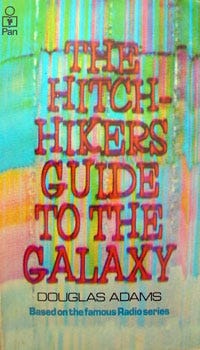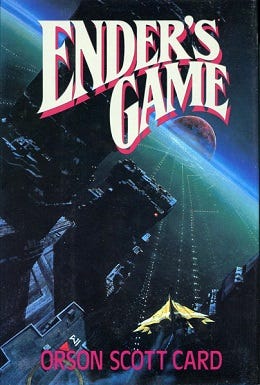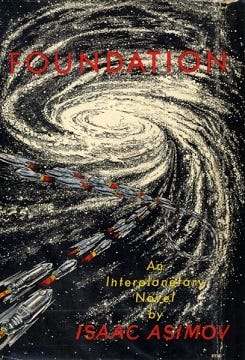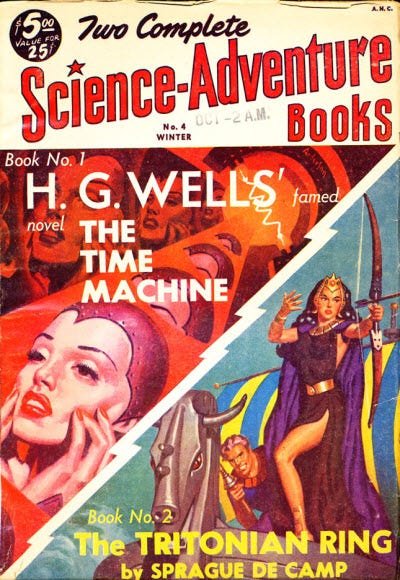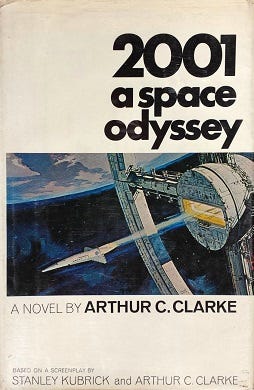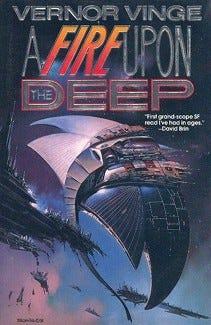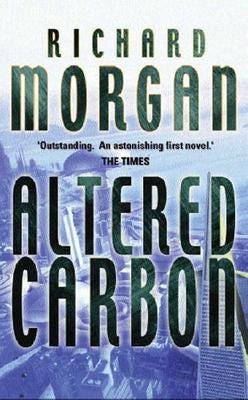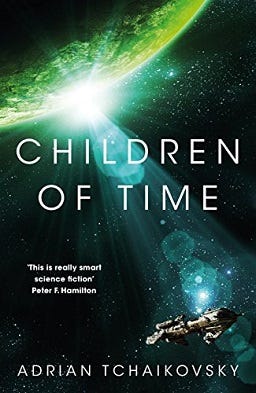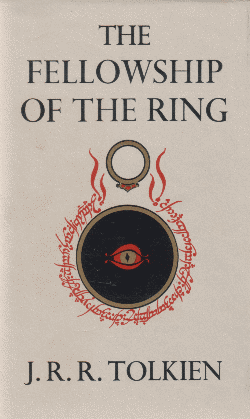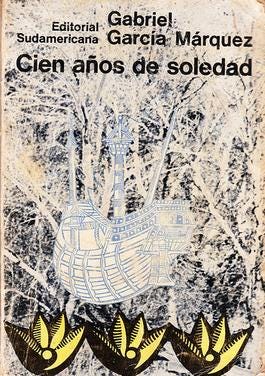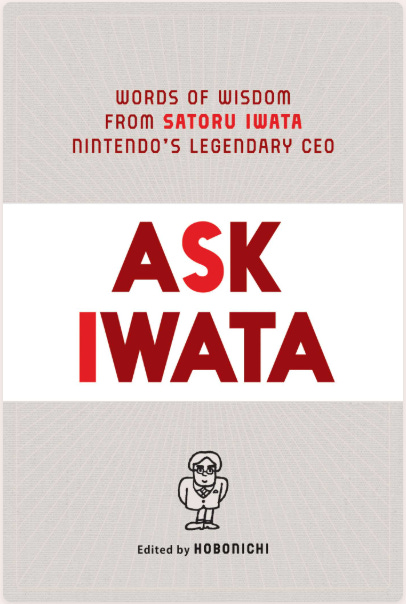You can just read 25 sci-fi books
Essential recommendations from a16z Infra, plus some fantasy and non-fiction
A few weeks ago, we sent out our inaugural “You can just read 25 books” recommendation list, and today we’re back with another one. This one is from the a16z Infra team, and true to form, it also exists on Github, where you can contribute your own PRs to add your favorites.
These are books and authors that at least one member of the a16z infra team read and loved. It’s heavy on science fiction because sci-fi is the most infra-y literary genre: it’s about new technology, new systems, and the people who devote their lives to building and understanding them. (There also way more than 25 books.)
A note before you continue: for ease of reading, we recommend the original Github format.
Sci-fi
Must-reads (S tier):
If you haven’t read a lot of science fiction before (or want to argue about what merits S tier), start here.
Dune series by Frank Herbert:
Arrakis. Sand worms. The spice. Paul Muad’Dib. This is the series that brought epic sci-fi to the mainstream. It’s also one of the first series that demonstrated sci-fi should be taken seriously, in this case as an allegory for geopolitical tensions in the Middle East. In case you’ve only seen the (very well done) movies, do yourself a favor and read the books, which are infinitely deeper and more intricately plotted. The last three fast-forward several thousand years and get a little weird (in a good way!).
Dune (1965)
Dune Messiah (1969)
Children of Dune (1976)
God Emperor of Dune (1981)
Heretics of Dune (1982)
Chapterhouse: Dune (1985)
Dick’s contribution to sci-fi is hard to overstate. All of his ~150 novels and short stories have at least one genuinely new idea: catching crime before it happens; changing who won WWII; editing human memories; etc. Most are also told in a fun and fast-paced way, and many of his new inventions have an irrepressible optimistic bent to them (despite sometimes dark subject matter). His stories have been heavily adapted into movies and TV shows, and in many ways changed how we as a society think about the future. Much of Dick’s work was written 50+ years ago, but it still feels fresh, as if it was written for our time. This is a very short list of some of his best works.
The Minority Report (1956)
The Man in the High Castle (1962)
Ubik (1969)
Culture series by Iain M. Banks:
Sci-fi nerds love this series, but it’s criminally unknown among casual readers. The setting is a hypothetical “post-scarcity” future in which space travel is trivial, machine intelligence is highly advanced, and most physical needs / desires have been solved. The books ask the question: what happens next, once we have everything we wanted? But more importantly, the stories are just beautifully crafted, and the characters (human, alien, and machine) feel completely novel. You could almost picture each book as a (really weird) dramatic play. As a bonus, if you read this series, you will get the joke about SpaceX’s spaceport names.
Consider Phlebas (1987)
The Player of Games (1988)
Use of Weapons (1990)
The State of the Art (1989)
Excession (1996)
Inversions (1998)
Look to Windward (2000)
Matter (2008)
Surface Detail (2010)
The Hydrogen Sonata (2012)
Sprawl trilogy by William Gibson:
Gibson is the main creator of cyberpunk, and his books created much of the aesthetic and vocabulary around the first internet wave (including VR, AI, and the word “cyberspace”). You can palpably feel Gibson’s influence on later works like The Matrix, Cyberpunk 2077, and many many others. Reading one of these books is kind of like visiting a dystopian, high-tech, 1980s-style, Japanese-ish vision for the future. They are also just great, gritty sci-fi stories. Gibson has a talent for making you care about characters who are often rough, self-centered, and vaguely unethical. If at first you can’t figure out what’s going on… it’s probably because Gibson was on acid.
Neuromancer (1984)
Count Zero (1986)
Mona Lisa Overdrive (1988)
The Hitchhiker’s Guide to the Galaxy series by Douglas Adams:
An absolute classic of the Englishman-traveling-the-galaxy genre. It follows the adventures of a hapless man in his pyjamas (Arthur Dent), several incorrigible aliens, and a depressed robot as they try their best to understand a galaxy that doesn’t really make a lot of sense. We won’t spoil it with too much plot description, but this series is charming, funny, and absurd. Plus it has a real message to deliver about the meaning of life. Which turns out to be an integer.
Mostly Harmless (1992)
Ender’s Saga series by Orson Scott Card:
Bug-like aliens are coming for Earth at an unknown future time… that’s suspiciously similar to the 1980s. Only a group of intelligent young children can save us, particularly a brilliant young leader named Ender. The story is pretty straightforward and a lot of fun, centered around a series of war simulations in the training academy. And it really resonates for anyone who felt bullied as a kid, and/or spent most of their childhood playing video games. The sequels are also great, covering Ender’s life after the war, living with and making amends for his actions as a soldier.
Ender’s Game (1985)
Speaker for the Dead (1986)
Xenocide (1991)
Children of the Mind (1996)
Classics (A tier):
These books all had massive impact when they were published and are still great reads today. Some feel a little dated now, so you can skip this section if you don’t want to dive into sci-fi history.
Asimov is often considered the father of modern science fiction. Among nearly 500 (!) published stories, he wrote one of the first epic space operas in the Foundation series, and he explored the relationship between humans and intelligent machines in the Robot series. These books are still super relevant today, both as great stories on their own and as archetypes for new sci-fi writers. Asimov also has an uncanny ability to weave technology into the broad sweep of human history and evolution. His work can be hard to access, since a lot of it was published initally in serial form. We suggest starting with the original Foundation trilogy and I, Robot, then going deeper if you want to see how it all ties together. The Apple TV series for Foundation is also very good.
Foundation series (1942-1953)
Galactic Empire series (1945–1952)
Like Asimov, Heinlein was prolific (publishing more than 30 novels) and had an enormous influence on the genre. He served as an engineer in the US Navy, and as a result brought a degree of technical rigor to his writing that was rare for his era. More importantly though, Heinlein used sci-fi scenarios (e.g. discovering Martian life in Stranger in a Strange Land) to deeply examine social constructs, and to poke & prod at the norms of his day. He views were seemingly fluid and open-minded: he comes across at various times as a libertarian, a socialist, a supporter of the military, a staunch opponent of racism and sexism, and an advocate for free love, among other things. But he was rarely preachy. Like Philip Dick, he wove his themes into fun, fast-paced stories, well worth reading.
Starship Troopers (1959)
Stranger in a Strange Land (1961)
The Moon is a Harsh Mistress (1966)
Wells reads like a grumpy Leonardo da Vinci. His stories are intelligent and well thought-out, often putting up a mirror to polite society (e.g. War of the Worlds was written at the peak of British imperialism). He also proved to be a visionary, writing about concepts like time travel, alien invasions, and genetic engineering before those ideas were well known. Wells’ worldview, though, was oddly anti-technology. His stories usually ended badly, and included more dystopian technological advances like atomic bombs (a phrase he may have coined), tanks, and air combat. So Wells was not exactly an optimist, but his work is too important to ignore.
The Time Machine (1895)
The War of the Worlds (1898)
The Invisible Man (1897)
The Island of Doctor Moreau (1896)
In contrast to HG Wells, Jules Verne was an infra maximalist and an open optimist. Like many modern writers, he built on real scientific concepts of his time to imagine plausible new technologies and amazing accomplishments. He researched everything obsessively, including a fully realized submarine design for Captain Nemo’s Nautilus in Twenty Thousand Leagues and fairly accurate orbital calculations in From the Earth to the Moon. After the publication of Around the World in Eighty Days, several newspaper reporters did, in fact, manage to go around the world in less than 80 days. Verne’s work is fundamentally about exploring the unknown, pushing the frontiers of human experience, and turning engineers into heroes.
From the Earth to the Moon (1865)
LeGuin was a pioneer of a more literary brand of science fiction. She has all the hallmarks we’ve come to know as sci-fi, including rich world building, starships, anarchist political strains, and cool new technology (like the ansbile: a faster-than-light communicator that has been borrowed by a thousand later authors). But she also wrote beautiful, poetic prose and explored the deeper, murkier aspects of her subject matter - including, famously, sex and gender identity. LeGuin stands out as one of the few female sci-fi writers of her time, but don’t be tempted to qualify her success. She was the first author, period, to win both the Hugo and Nebula awards in the same year, for The Left Hand of Darkness. Then she did it again with The Dispossessed.
A Wizard of Earthsea (1968)
The Left Hand of Darkness (1969)
The Dispossessed (1974)
Clarke is often grouped with Asimov and Heinlein as the “Big Three” of golden age sci-fi. He has legit credentials outside of fiction writing: he served in the RAF as a radar specialist during WWII; he graduated with degrees in mathematics and physics from King’s College; and wrote technical papers about novel uses for geostationary satellites. His stories are grounded in real science and technical detail (e.g. he was an early proponent of space elevators). But they’re also deeply philosophical, especially related to the relationship between man & machine, and carry an air of mystery. 2001, cowritten with Stanley Kubrick, is his best known work.
2001: A Space Odyssey (1968)
Rendezvous with Rama (1973)
The Fountains of Paradise (1979)
Very good books (A tier)
These are all contemporary books and very very good. Highly recommended.
Stephensen is a sci fi descendant of William Gibson. His books are often cyberpunk-ish and explore themes around the metaverse, distributed computing, and biological augmentation. He also comes up with some truly wild ideas, like the Drummers (a cult living in a cave that collectively performs large-scale computations through hallucinogenic drugs and endless sex) and cryptocurrency. At their best, Stephenson’s books are diligently researched, thought provoking, and funny. Fair warning though, most of these books don’t have endings (they literally stop mid-sentence).
Snow Crash (1992)
The Diamond Age (1995)
Cryptonomicon (1999)
Anathem (2008)
Seveneves (2015)
Remembrance of Earth’s Past series by Liu Cixin:
China is likely the biggest sci-fi market in the world, but it didn’t have a landmark homegrown talent until Liu published The Three-Body Problem. These books open with a painful political scene from the Cultural Revolution, then sweep through realistic astrophysics, VR simulations, family/ friend drama, Fermi’s paradox, and planet-scale efforts to ensure humanity’s survival. Liu does a fantastic job blending the science, space, and human elements together into an engaging story (now also a Netflix show). Here’s hoping this just the start of non-Western sci-fi, and new science fiction ideas, entering the mainstream.
The Three-Body Problem (2008)
The Dark Forest (2008)
Death’s End (2010)
Zones of Thought series by Vernor Vinge:
The story is pretty creative and feels zero derivative from anything else that came before (or even after). Vinge’s aliens are genuinely alien (like dog-like pack minds that think in parallel). There’s also buried super intelligence, bonsai things on wheels, a galactic immune system against super intelligences, computational “zones” limited by physics, etc. It’s a weird trip where you can probably never predict what would happen next.
A Fire Upon the Deep (1992)
A Deepness in the Sky (1999)
The Children of the Sky (2011)
Takeshi Kovacs series by Richard K. Morgan:
The premise of this series is what infra people might call software-defined humans. Bodies are the hardware. The software (our consciousness) can be downloaded, uploaded, transmitted over interplanetary distances, and backed up in case of death. This idea is undeniably cool, and Morgan builds a dark, cyberpunk universe around it. He exploits the concept brilliantly to tell a series of detective stories, battles stories, and trimphs of good(ish) over evil. As you might expect, it’s action packed, and there is a lot of sex and violence. Netflix tried to capture it - the first season is pretty good - but the books are darker and smarter.
Altered Carbon (2002)
Broken Angels (2003)
Woken Furies (2005)
The Expanse series by James S.A. Corey:
Many sci fi books jump far into the future, where technology has advanced dramatically, human civilization spans lightyears, and social dynamics are hard to really recognize. The Expanse takes the opposite approach: it is set in the near future, when Earth is getting too crowded, humans have colonized Mars and the Kuiper belt, and space travel has advanced via fairly conventional tech. The focus instead is on very believable conflict, and relatable individual stories, as tension builds among the various planetary (and asteroid-based) factions. Add in a few magical sci fi elements, and it’s a very fun series (and a great show on Amazon Prime).
Leviathan Wakes (2011)
Caliban’s War (2012)
Abaddon’s Gate (2013)
Cibola Burn (2014)
Nemesis Games (2015)
Babylon’s Ashes (2016)
Persepolis Rising (2017)
Tiamat’s Wrath (2019)
Leviathan Falls (2021)
Also worth reading (B tier)
These books are all fun and/or interesting, and well worth the time, if you are looking for something new.
Red Rising series by Pierce Brown:
This series is a fast read and a ton of fun. One of our partners called it “pure pulp” (in a good way). Think Gladiator meets Hunger Games in space: this is a violent story about a mistreated, lowly “red” who rises up through the academy ranks to defeat his enemies and lead his arrogant upper-class peers. School battles eventually become real battles for control of the solar system. Romance, murder, betrayal, Marcus Aurelius quotes, and general drama ensue. Believe it or not, it’s kind of a young adult book.
Red Rising (2014)
Golden Son (2015)
Morning Star (2016)
Iron Gold (2018)
Dark Age (2019)
Light Bringer (2023)
Revelation Space series by Alastair Reynolds:
These books read like a cousin of The Three Body Problem: grand space opera, with plausible treatment of near-lightspeed travel, where humanity has to fight for survival in a hostile universe. Reynolds has a PhD in astrophysics, and you can see this influence in the cool technology he imagines (e.g. “cryoarithmetic engines” that cool spacecraft via endothermic computation). The world building is also very strong. On the flip side, the characters feel a little flat, and Reynolds can get bogged down in hyper-rational explanations of what’s going on. But the slow-burning plots get more engaging the more you read. The Dreyfus books are possibly better than the original Inhibitor series.
The Inhibitor Sequence:
Revelation Space (2000)
Redemption Ark (2002)
Absolution Gap (2003)
Inhibitor Phase (2021)
The Dreyfus Emergencies:
The Prefect (2007)
Elysium Fire (2018)
Machine Vendetta (2024)
Chasm City (2001)
Imperial Radch series by Ann Leckie:
This is a great space opera that’s reminiscient of Banks’ Culture series. The idea is that spaceship AIs (and some people) can control several bodies at once called “ancillaries.” Consciousness is shared across all bodies, unless/ until something goes wrong. Leckie uses this device to tell a dramatic and often funny story about revenge, politics, and consciousness. Like Banks, she has a talent for folding local stories, with engaging settings and characters, into a sweeping global saga. Leckie also draws comparisons to LeGuin for her gender-neutral characters who are always called “she.”
Ancillary Justice (2013)
Ancillary Sword (2014)
Ancillary Mercy (2015)
Children of Time series by Adrian Tchaikovsky:
You can learn a lot about a work of sci-fi by studying the biography of its authors. Adrian Tchaikovsky is a zoologist, so naturally his work probes the implications of super-intelligent spiders in a universe far in the future. Across alternating chapters in Children of Time, humans cycle through scarcity, class politics, and technological decay, while spiders (in an experiment gone wrong/ right?) evolve from cave tools to astronomy and planet-scale coordination. It’s a terrifying conceit, but the ending is (spoiler alert) quite optimistic.
Children of Time (2015)
Children of Ruin (2019)
Children of Memory (2022)
Teixcalaan series by Arkady Martine:
This is space opera written by a Byzantine historian, so it’s as intricate and politically complex as you’d expect. The world in this series has a unique texture: kind of Armenian/ Central Asian, with some Jewish and Aztec motifs. The thematic focus is heavy on culture, identity, and use of language, and the main subject is an empire that runs on poetry. While the plot and tech are not totally novel, this series is thoughtfully crafted and super engaging. It also features a highly realistic depiction of email anxiety.
A Memory Called Empire (2019)
A Desolation Called Peace (2021)
Permutation City by Greg Egan:
An ideal evening pairing with Permutation City might be spinning up scenes on the World Labs Marble explorer, and contemplating just how far we might be from the future the book articulates – one in which “Copies” of human consciousness run in computational simulations that can be slowed down or sped up, completely independent of “time” in the external world. In Egan’s book, Paul Durham recruits Copies to participate in an experiment, resulting in a bootstrapped world that evolves into a fully recursive universe. There are tons of great details in here, one of which is a highly mercenary QIPS exchange (that’s “quadrillion instructions per second”), which might feel evocative to any engineer currently buying compute from a hyperscaler.
Fantasy
We are not fantasy people really. This list tends towards interesting/ slightly different takes on the genre. Please open PRs to add everything we’ve missed (including tiers)!
The Lord of the Rings series by J.R.R. Tolkien:
There’s not much to say about Lord of the Rings that you don’t already know. Tolkien was a genius - the original world builder - and the person probably most responsible for bringing fantasy and science fiction to the mainstream. Also inspired a popular Hugo Weaving movie trilogy of the same name.
The Fellowship of the Ring (1954)
The Two Towers (1954)
The Return of the King (1955)
A giant of Latin American literature. García Márquez’s superpower is his ability to weave fantasy elements - like levitating priests, rain that lasts for years, insomnia plagues, or women ascending to heaven while folding bedsheets - naturally into stories of everyday life. And he uses this power brilliantly, not only to build a magical, alternate version of Latin America, but to draw out deep seated feelings and experiences of his characters/ readers. His sprawling family sagas explore solitude, love, power, and the circular nature of time. Winner of the 1982 Nobel Prize.
The Autumn of the Patriarch (1975)
Love in the Time of Cholera (1985)
The General in His Labyrinth (1989)
Of Love and Other Demons (1994)
García Márquez’s long lost Japanese cousin (in a literary sense). Murakami made a genre out of weird, surreal, and very relatable coming-of-age stories. They have vanishing cats, wells that lead to alternate dimensions, mysterious women who may or may not exist, and protagonists who listen to jazz records while cooking spaghetti at 2am. Murakami is master at sucking you into these elaborate, bizarre stories and making you feel the loneliness/ confusion/ angst/ etc of his teen protagonists.
Norwegian Wood (1987)
The Wind-Up Bird Chronicle (1994)
Kafka on the Shore (2002)
1Q84 (2009)
The Book of the New Sun series by Gene Wolfe:
BotNS, part of the “science fantasy” subgenre, is kind of a puzzle by design. It takes place in the distant future, but the setting is medieval. There is some advanced technology, but how it works is never really explained. The main character (Severian) is a professional torturer - yep, that’s a thing - and you often get the sense he’s hiding the truth of what’s going on. Yet despite all this, you generally root for him and get engaged in his quest to find his place in the world, which wraps up in clever and dramatic fashion. It also helps that the characters are truly unique and that the prose is among the best ever written in sci-fi/ fantasy.
The Shadow of the Torturer (1980)
The Claw of the Conciliator (1981)
The Sword of the Lictor (1982)
The Citadel of the Autarch (1983)
Hyperion Cantos by Dan Simmons:
This is a super unique series that also belongs generally to the science fantasy subgenre. It takes place in 2732, when humans have colonized hundreds of planets and have cool technology like superhuman AI and teleportation portals (“farcasters”). The stories themselves are modeled on The Canterbury Tales, recounting the backstories of a group of pilgrims visiting the remote planet Hyperion: two Catholic priests, a soldier, a professor, etc. Each pilgrim has an engaging story to tell as they journey to meet a bizarre, terrifying creature known as the Shrike - which then kicks off more of a space opera plot. Like BotNS, it’s a very well-written series that’s intentionally mysterious.
Hyperion (1989)
The Fall of Hyperion (1990)
Endymion (1996)
The Rise of Endymion (1997)
The Baroque Cycle by Neal Stephenson:
This is a sweeping, detailed, fantastic, and funny account of the life and times of Isaac Newton. It’s like being transported to 17th century England and being at the heart of scientific discovery. It also includes speculative retelling of much of the political and court dramas of Europe at the time. If you’re not a fan of Stephenson’s sci-fi books, give him another chance with this series - it has endings!
Quicksilver (2003)
The Confusion (2004)
The System of the World (2004)
UNSONG by Scott Alexander:
Imagine the world is populated mostly by computer programmers, mystic Jewish scholars, and celestial beings. Oh and magic is real. And Richard Nixon is involved. This book is hard to describe, but it has a completely unique universe and a fun story that ties together nicely.
So.. Gaiman is a real test in separating the art from the artist. His books are entertaining and have a fresh voice compared to a lot of traditional fantasy. Unfortunately, he’s not only treated many women horribly, but you can start to see those themes pop up in his books if you look for them. The stories also tend to be pretty similar to one another. But some are still very good and worth reading.
Good Omens (1990)
Stardust (2000)
American Gods (2001)
Anansi Boys (2005)
Non-fiction
The Worlds I See: Curiosity, Exploration, and Discovery at the Dawn of AI by Fei-Fei Li:
The ImageNet creator’s memoir reads like a startup founder’s journey, except the product is modern AI and the debugging involves teaching computers to see cats. Li shows how computer vision went from “maybe computers can identify edges?” to “oh no, they’re generating deepfakes.” Part immigrant story, part research memoir, part warning about what happens when you successfully teach silicon to perceive reality. Essential reading for understanding why your image classifier thinks that chihuahua is a muffin.
Ask Iwata: Words of Wisdom from Satoru Iwata, Nintendo’s Legendary CEO by Satoru Iwata:
The programmer-turned-CEO who personally optimized Pokémon Gold/Silver to fit two regions on one cartridge. This collection captures Iwata’s philosophy of making games that are fun for everyone, not just the hardcore. He approached business problems like debugging code: understand the system, find the bottleneck, optimize with elegance. If you’ve ever said “please understand” unironically, this book explains why. Also contains the best management advice from someone who actually shipped products people loved.
This newsletter is provided for informational purposes only, and should not be relied upon as legal, business, investment, or tax advice. Furthermore, this content is not investment advice, nor is it intended for use by any investors or prospective investors in any a16z funds. This newsletter may link to other websites or contain other information obtained from third-party sources - a16z has not independently verified nor makes any representations about the current or enduring accuracy of such information. If this content includes third-party advertisements, a16z has not reviewed such advertisements and does not endorse any advertising content or related companies contained therein. Any investments or portfolio companies mentioned, referred to, or described are not representative of all investments in vehicles managed by a16z; visit https://a16z.com/investment-list/ for a full list of investments. Other important information can be found at a16z.com/disclosures. You’re receiving this newsletter since you opted in earlier; if you would like to opt out of future newsletters you may unsubscribe immediately.





